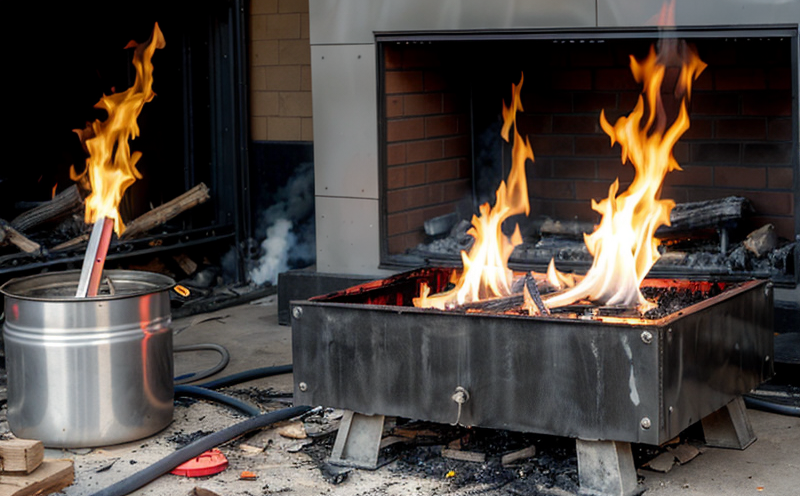ISO 5659-2 Smoke Density and Toxicity Testing
The ISO 5659 series of standards is specifically designed to assess the fire performance characteristics of materials used in electronic products. Among these, ISO 5659-2 focuses on smoke density and toxicity testing.
This standard provides a method for determining both the optical density and the toxicity of smoke produced by burning test specimens under controlled conditions. The primary goal is to evaluate how effectively fire-resistant materials can limit the generation of toxic or harmful smoke in case of a fire, thereby protecting human life and reducing potential damage.
The testing protocol involves placing a specimen on a burner, igniting it, and measuring the density and toxicity of the resulting smoke using specialized equipment. The optical density is measured by detecting changes in light transmission through the plume of smoke generated during combustion. Toxicity is assessed based on the concentration of carbon monoxide (CO) and hydrogen cyanide (HCN), which are known indicators of fire's potential to produce toxic gases.
The results from this testing provide critical data that manufacturers can use to ensure their products meet stringent safety standards, especially in high-risk environments like electronics manufacturing facilities or data centers. Compliance with these tests is essential for ensuring the safety and reliability of electronic components under extreme conditions.
Understanding the specific requirements outlined in ISO 5659-2 helps quality managers and R&D engineers design safer products that can withstand fire-related threats effectively. It also aids compliance officers in verifying that their suppliers adhere to international best practices regarding material selection and product safety.
Industry Applications
- Data Centers: Ensuring electronic components can withstand fire without producing harmful smoke.
- Aircraft Electronics: Protecting critical systems in high-risk environments like aircraft cockpits.
- Medical Devices: Guaranteeing that life-saving equipment remains functional and safe during a fire emergency.
The results of ISO 5659-2 testing are essential for ensuring the safety and reliability of electronic components used across various industries. By adhering to these standards, manufacturers can ensure their products meet stringent safety requirements, thereby protecting human life and reducing potential damage in case of a fire.
Why Choose This Test
- The test provides critical data on the optical density and toxicity of smoke produced by burning test specimens, which is vital for ensuring product safety during fires.
- It helps manufacturers comply with international standards, enhancing their reputation in the global market.
- The results guide R&D engineers in designing safer products that can withstand fire-related threats effectively.
By choosing ISO 5659-2 Smoke Density and Toxicity Testing, quality managers, compliance officers, and R&D engineers ensure they are adhering to the highest safety standards for their electronic products. This not only enhances product reliability but also contributes significantly to environmental sustainability by minimizing waste and potential damage during fires.
Environmental and Sustainability Contributions
The results of ISO 5659-2 testing play a crucial role in promoting sustainable practices within the electronics industry. By ensuring that materials used in electronic products can limit smoke production during fires, this test contributes to reducing environmental impact. The reduced generation of toxic gases also supports better air quality and reduces healthcare costs associated with fire-related illnesses.
The findings from this testing are particularly beneficial for organizations committed to sustainability initiatives. They help manufacturers make informed decisions about material selection and product design, ultimately leading to the development of greener technologies that perform safely and effectively in high-risk environments.





